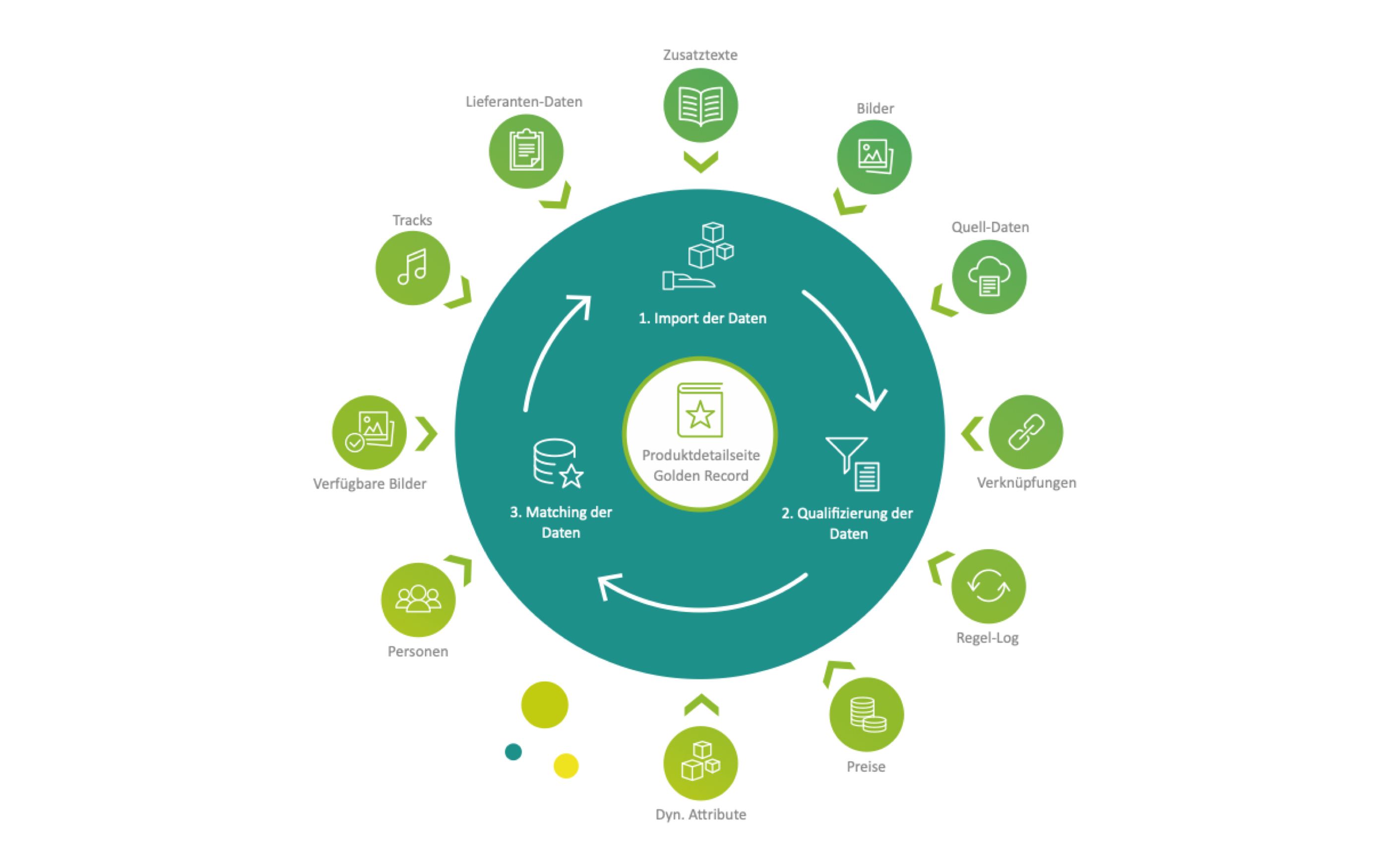Thalia – the Epitome of Forward-looking Reading Worlds
Thalia: A Leading Omnichannel Retailer
Thalia has been networking its sales channels for many years and is constantly driving forward the digital transformation. In addition to more than 350 bookstores, there are a large number of online services that currently offer around 10 million products. Spurred on by impulses from culture and society, new offers for customers are constantly being created. Among other things, the company is a member of the tolino alliance, which was founded in 2013 and has since been joined by more than 2,000 bookshops internationally. Thus, the tolino e-reader family has become well established in this country as an alternative to the Kindle.
In the future, significantly more books and articles are to be marketed online. The organisation of this growing portfolio of products and services across the entire value chain poses an immense challenge. A networked infrastructure that is powerful and user-friendly is necessary for this. Aware of this, Thalia's management launched the redevelopment of its in-house PIM platform. The overriding premise: Instead of a monolithic software, diverse applications for specialized services are to be introduced.
A Look Behind the Scenes – Millions are at Stake Here
Different Thalia departments spread across countries work with over 300 million data records, hundreds of attributes and dozens of channels every day – and the trend is rising. Over time, millions more items need to be organized. Approximately 35 data suppliers report bibliographic article data. To optimize data quality, additional manufacturers and external agencies are to be directly connected to the IT in the future.
All data flows together in the in-house PIM system, where it is refined and distributed to the sales channels. It forms the starting point for continuous performance and process optimization at Thalia. In the meantime, the functional progress in application development had brought the existing system to its limits and it needed to be renewed.

Making Good Things Even Better: With New Technology and a User-friendly UI
The Thalia development team had already set the technological course with the single-page application approach based on Vue.js. Now the task was to find the right partner who had the necessary experience with the special features and requirements of an enterprise PIM system and at the same time was able to design a user interface according to modern standards for such a platform – user-friendly and powerful, so that intuitive and at the same time professional work would be possible for years to come. With a clear strategy, many years of interdisciplinary experience around the topics of product information management, user experience/user interface and agile working culture, communicode was able to convince in the pitch.
Intelligent Product Management Through Optimal User Experience
PIM systems are used for mass processing of product information and have two main perspectives: manual and automated processes. An optimal user experience empowers the user in demanding manual tasks and automates recurring activities. The following goals and measures were defined for the initial project:
- Design of a sustainable PIM strategy for Thalia
- Analysis and modelling of business value driven workflows
- Design of a modern operating and design concept
- Development and implementation of the initial product backlog
The initial aim of the project described here was to design a sustainable PIM strategy. Understanding the tasks of individual roles at Thalia on the one hand as well as the goals of the company on the other hand is the art here. Relevant business processes were examined and modeled by communicode to derive new, effective user journeys – PIM experts and UX designers worked hand in hand here.
A Heart for the User Paired with Strategic Thinking
The resulting concept particularly highlights the view of individual roles in the company on data, processes and channels and makes them transparent by means of the new operating concept and user experience. communicode developed a product backlog, in which the entire PIM platform was described based on around 100 user stories. Together with the stakeholders and users at Thalia, communicode's PIM consultants and designers identified the following main topics:
- Search & Retrieval
- Content Creation
- Content Enrichment
- Content Publication
- System Administration
Based on these findings, communicode designed the corresponding information architecture and relevant application scenarios. Automation potentials for redundancy avoidance and process optimisation are consistently used to make product management more intelligent, clearer and more efficient. Thus, the new PIM application becomes more intuitive and versatile and improves workflows and coordination processes. The project supports and promotes the continuously progressing change management process at Thalia.

Designing a System
Following the workshop and prototyping phase, communicode designed a UI component system for the look and feel of the new Thalia PIM, which forms the foundation of the user interface and internalises the Corporate Design. These UI components can be found in the Thalia development framework.
Rich wireframe with Vue.js
Vue.js was chosen by Thalia because the framework is based on Google's Material Design and is therefore particularly suitable for browser-based applications. As a so-called progressive framework, both smaller prototypes and larger, more complex applications can be developed with it.
One of the greatest strengths of the Vue Design System is what we like to call rich wireframe: Already in the prototyping phase, a wireframe is created that comes very close to the UI in its appearance. This ensures an agile interdisciplinary workflow from the conception of pages and components to the technical implementation, and the user interface can follow the functional progress at any time.
Marc Zeyen | Art Director communicodeAgile to the Goal: Tools for Successful Collaboration
Prompt collaboration and regular incremental results require an organisational environment which is as agile as possible. Here, Jira was recommended for project tracking and Gallery.io for presentation, feedback management, documentation and developer hand-offs. Furthermore, a common UI component system was used to avoid friction losses between design (communicode) and development (Thalia).


